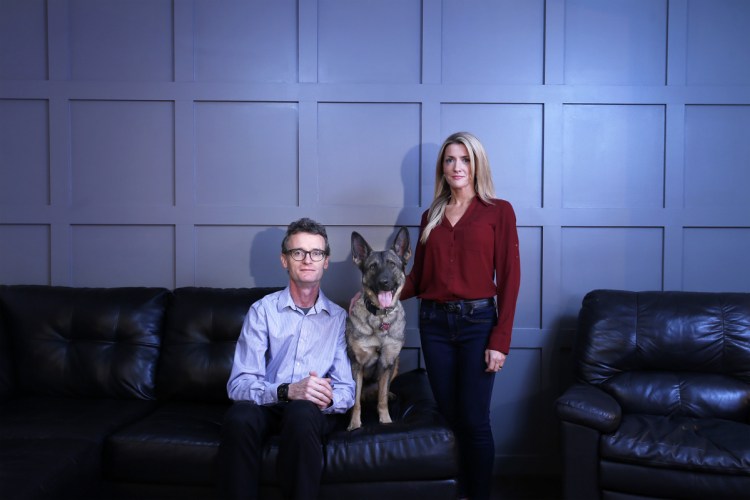For far too many of Maine’s nearly 117,000 military veterans, the after-effects of service will linger forever. Post-traumatic stress disorder exacts a brutal, silent toll, and breaking through the anxiety and flashbacks can take years, even with expert help.
For Dr. Hagen Blaszyk and Linda Murray, the best remedy often walks on four legs.
Service dogs have a unique ability to bridge the gaps that years of talk therapy and psychotropic medication struggle to address. But most service animals cost roughly the same as a semester at some colleges.
“When a veteran Googles ‘PTSD service dog,’ they’ll see prices between $10,000 and $35,000,” said Blaszyk, 54, a pathologist at Maine Medical Center. “I’m sure a lot of these organizations mean well, but they build their product very expensive with a lot of overhead.”
Three years ago, after Blaszyk and Murray met in a canine obedience class, they teamed up to try a different model. Their nonprofit, K9s on the Front Line, dramatically lowers the cost and barriers associated with pairing veterans with PTSD service animals.
Their service is free to clients and funded entirely with donations. So far, they have paired more than 100 veterans from Maine and New England with service dogs, said Murray, 35, a mortgage broker from South Portland. Neither draw a salary, and the group does not maintain a brick-and-mortar office, allowing them to operate with low overhead so more donated dollars go directly toward the mission.
Where the traditional model of service animal training relies on professionals raising pure-bred dogs from puppyhood, K9s on the Front Line uses adolescent dogs rescued from kill shelters around the country.
The veterans immediately begin living with the dogs while they attend weekly training sessions taught by a half dozen local police K9 handlers. That has lowered the total training cost to roughly $3,500, Blaszyk and Murray said.
The success of the veterans has hinged in large part on training environment and the instructors.
Most police officers, whether they acknowledge it or not, experience PTSD, too, Blaszyk said. “When (the veterans) walk in, at an emotional level, they don’t have to explain anything. They don’t have to explain themselves. It’s almost like a secret radio frequency (from the instructors) that says ‘I’m OK.’ “
Blaszyk, whose background in science has made him distrustful of anecdotal evidence, has kept data on each client, including measures of clients’ overall health and socioeconomic life. The data helps direct how to tweak the program to improve outcomes and provides concrete measurements that show donors that their dollars are not wasted.
The results have been dramatic, the pair has said.
“We’ve had veterans get completely off medication,” said Murray. “Veterans who weren’t working are now working. Wives that say ‘I feel like I have my husband back.’ Veterans who say ‘I’m a better father,’ ‘I’m a better mother.’ The impact is a ripple effect.”
Comments are not available on this story.
Send questions/comments to the editors.



